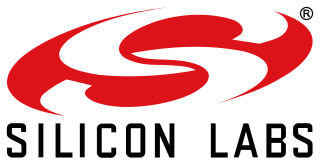History
SiTime was founded in Santa Clara, California in 2005 by researchers Marcus Lutz and Aaron Partridge. [5] [1]
In 2014, the company was acquired for $200 million by Japanese fabless semiconductor company MegaChips. [6]
In 2016, the company launched its Elite platform of Super-TCXOs (temperature compensated crystal oscillators). [7]
In November, the company announced its Emerald line of MEMS timers designed for 5G equipment. [8]
In November 2019, SiTime was spun off and went public. [5] MegaChips is a shareholder that owns 25%. [6]
In August 2020, the company announced its Cascade family of system on a chip (SoC), its first clock chip product. [9] In October, the company introduced ApexMEMS resonators, designed for high volume, space constrained applications. [10]
In January 2021, based on SiTime's 2020 stock gain, Investors Business Daily included the company on its list of the 100 best stocks of 2020. [11]
In January 2022, CEO Vashist credited its relationship with its foundry partners and the small size of its chips for helping it avoid the chip shortages faced by other chip companies at the time, due to 2021–22 supply chain issues. [12] In February, the company introduced its XCalibur line of active resonators. [13]
In July 2023, SiTime released the SiT5543, part of its Endura family of MEMS ruggedized Super-TCXOs and in September the Epoch Platform MEMS OCXOs, the holdover oscillator to deliver this accuracy in real world environments. [14]
Products
SiTime manufacturers silicon-based MEMS timing devices, used as an alternative to quartz timers in precision timing applications such as controlling the timing of electronic systems, managing electronic transfer of data, setting radio frequencies or measuring time. [15] It provides MEMS resonators, oscillators and clocks. [9]
The company's XCalibur line of MEMs-based active resonators are designed to replace quartz resonators. [13]
The company's Elite Platform of Super-TCXOs (temperature compensated crystal oscillators) includes the Elite and Elite X. [7] [16] The devices are designed for harsh environments, such as with extreme temperatures, thermal shock and vibration. [16]
The company's Cascade family is a MEMS clock system-on-chip (SoC), with an integrated MEMS resonator, oscillator and clock integrated circuit (IC). [9]
The company also develops MEMs oscillators by integrating MEMS resonators with oscillator circuits and a phase-locked loop. [17]
The company's Emerald platform is an oven-controlled crystal oscillator (OCXO), which includes an on-chip heater, for extreme temperature environments. [18] The platform is designed for 5G networks and edge computing, where the equipment sits closer to customers, and must maintain precise timing in the face of environmental stressors such as airflow, temperature perturbation, vibration, shock, and electromagnetic interference (EMI). [8]
In July 2023, SiTime released the SiT5543, part of its Endura family of MEMS ruggedized Super-TCXOs and in September the Epoch Platform that delivers a stable clock to datacenter and network infrastructure equipment. [19]
Operations
SiTime is headquartered in Santa Clara, California. In its 2021 annual report, the company reported 279 full time employees in the United States, France, Malaysia, the Netherlands, Taiwan, Japan and Ukraine. It also reported its top customers as Apple, Fitbit, Garmin, Samsung, Google, Microsoft, Dell, HiKVision and Huami. [23]
The company has three customer segments: The Mobile, IoT and Consumer segment develops high-volume, lower-cost devices for products like smartphones and fitness trackers. The Communications and Enterprise segment develops products for networking, telecom and data center products. Its Industrial, Automotive and Aerospace segment includes chips for electric vehicles, satellites and missiles. [24]
German industrial company Robert Bosch and Taiwanese semiconductor company TSMC are the company's foundry partners. [8]

Infineon Technologies AG is Germany's largest semiconductor manufacturer.

A real-time clock (RTC) is an electronic device that measures the passage of time.

CSR plc was a multinational fabless semiconductor company headquartered in Cambridge, United Kingdom. Its main products were connectivity, audio, imaging and location chips. CSR was listed on the London Stock Exchange and was a constituent of the FTSE 250 Index until it was acquired by Qualcomm in August 2015. Under Qualcomm's ownership, the company was renamed Qualcomm Technologies International, Ltd.

Silicon Image Inc. was an American fabless semiconductor company based in Hillsboro, Oregon, and active from 1995 to 2005. The company designed circuits for mobile phones, consumer electronics and personal computers (PCs). It also manufactured wireless and wired connectivity products used for high-definition content. The company's semiconductor and IP products were deployed by the electronics manufacturers in devices such as smartphones, tablets, digital televisions (DTVs), other consumer electronics, as well as desktop and notebook PCs. Silicon Image, in cooperation with other companies, was influential in the creation of some global industry standards such as DVI, HDMI, MHL, and WirelessHD.
Microchip Technology Incorporated is a publicly listed American corporation that manufactures microcontroller, mixed-signal, analog, and Flash-IP integrated circuits. Its products include microcontrollers, Serial EEPROM devices, Serial SRAM devices, embedded security devices, radio frequency (RF) devices, thermal, power and battery management analog devices, as well as linear, interface and wireless products.
Cavium was a fabless semiconductor company based in San Jose, California, specializing in ARM-based and MIPS-based network, video and security processors and SoCs. The company was co-founded in 2000 by Syed B. Ali and M. Raghib Hussain, who were introduced to each other by a Silicon Valley entrepreneur. Cavium offers processor- and board-level products targeting routers, switches, appliances, storage and servers.
UNISOC, formerly Spreadtrum Communications, Inc., is a Chinese fabless semiconductor company headquartered in Shanghai which produces chipsets for mobile phones. UNISOC develops its business in two major fields - consumer electronics and industrial electronics, including smartphones, feature phones, smart audio systems, smart wear and other application fields; Industrial electronics cover the fields such as LAN IoT, WAN IoT and smart display.
GlobalFoundries Inc. (GF) is a multinational semiconductor contract manufacturing and design company incorporated in the Cayman Islands and headquartered in Malta, New York. Created by the divestiture of the manufacturing arm of AMD, the company was privately owned by Mubadala Investment Company, a sovereign wealth fund of the United Arab Emirates, until an initial public offering (IPO) in October 2021.
SiBEAM Inc., a wholly owned subsidiary of Lattice Semiconductor, is a fabless semiconductor company that provides integrated circuits and system solutions for millimeter-wave (mmWave) wireless communications and sensing.

Silicon Laboratories, Inc. is a fabless global technology company that designs and manufactures semiconductors, other silicon devices and software, which it sells to electronics design engineers and manufacturers in Internet of Things (IoT) infrastructure worldwide.
Crystal oscillators can be manufactured for oscillation over a wide range of frequencies, from a few kilohertz up to several hundred megahertz. Many applications call for a crystal oscillator frequency conveniently related to some other desired frequency, so hundreds of standard crystal frequencies are made in large quantities and stocked by electronics distributors. Using frequency dividers, frequency multipliers and phase locked loop circuits, it is practical to derive a wide range of frequencies from one reference frequency.

MaxLinear is an American hardware company. Founded in 2003, it provides highly integrated radio-frequency (RF) analog and mixed-signal semiconductor products for broadband communications applications. It is a New York Stock Exchange-traded company.

Dialog Semiconductor PLC is an American founded UK-Domiciled manufacturer of semiconductor-based system solutions. The company is headquartered in the United Kingdom in Reading, with a global sales, R&D and marketing organization. Dialog creates highly integrated application-specific standard product (ASSP) and application-specific integrated circuit (ASIC) mixed-signal integrated circuits (ICs), optimised for smartphones, computing, Internet of Things devices, LED solid-state lighting (SSL), and smart home applications.

Tower Semiconductor Ltd. is an Israeli company that manufactures integrated circuits using specialty process technologies, including SiGe, BiCMOS, Silicon Photonics, SOI, mixed-signal and RFCMOS, CMOS image sensors, non-imaging sensors, power management (BCD), and non-volatile memory (NVM) as well as MEMS capabilities. Tower Semiconductor also owns 51% of TPSCo, an enterprise with Nuvoton Technology Corporation Japan (NTCJ).
Microelectromechanical system oscillators are devices that generate highly stable reference frequencies used to sequence electronic systems, manage data transfer, define radio frequencies, and measure elapsed time. The core technologies used in MEMS oscillators have been in development since the mid-1960s, but have only been sufficiently advanced for commercial applications since 2006. MEMS oscillators incorporate MEMS resonators, which are microelectromechanical structures that define stable frequencies. MEMS clock generators are MEMS timing devices with multiple outputs for systems that need more than a single reference frequency. MEMS oscillators are a valid alternative to older, more established quartz crystal oscillators, offering better resilience against vibration and mechanical shock, and reliability with respect to temperature variation.
Sand 9 is a fabless Micro-electromechanical system (MEMS) company based in Cambridge, Massachusetts. Sand 9 developed a piezoelectric MEMS resonator to serve as an alternative for quartz timing devices in applications such as smart phones, low-power wireless devices, and communications infrastructure equipment.

Qorvo is an American multinational company specializing in products for wireless, wired, and power markets. The company was created by the merger of TriQuint Semiconductor and RF Micro Devices, which was announced in 2014 and completed on January 1, 2015. It trades on Nasdaq under the ticker symbol QRVO. The headquarters for the company originally were in both Hillsboro, Oregon, and Greensboro, North Carolina, but in mid-2016 the company began referring to its North Carolina site as its exclusive headquarters.

SiFive, Inc. is a fabless semiconductor company and provider of commercial RISC-V processor IP and silicon chips based on the RISC-V instruction set architecture (ISA). SiFive's products include cores, SoCs, IPs, and development boards.
The semiconductor industry, including Integrated Circuit (IC) manufacturing, design, and packing, forms a major part of Taiwan's IT industry. Due to its strong capabilities in OEM wafer manufacturing and a complete industry supply chain, Taiwan has been able to distinguish itself as a leading microchip manufacturer and dominate the global marketplace. Taiwan’s semiconductor sector accounted for US$115 billion, around 20 percent of the global semiconductor industry. In sectors such as foundry operations, Taiwanese companies account for 50 percent of the world market, with Taiwan Semiconductor Manufacturing Company (TSMC) the biggest player in the foundry market.
The Chinese semiconductor industry, including integrated circuit design and manufacturing, forms a major part of mainland China's information technology industry.





